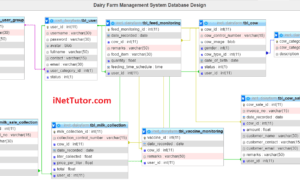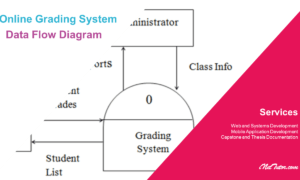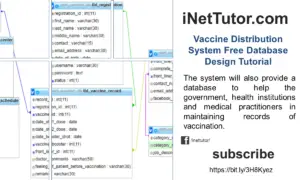Biometric Based Attendance System ER Diagram
This article will discuss the step by step process on how to prepare the entity relationship diagram or ERD of the project entitled Biometric Based Attendance System.
The capstone project entitled Biometric Based Attendance System is network based system that runs on local area network of the organization. The project was developed in Visual Basic.Net and digital persona biometric device. Software development kit or SDK is needed to be able to use the device and develop an attendance system that captures the fingerprint of a person. The biometric based attendance system will be used as attendance for the school event and program.
The first step in the development of the Biometric Based Attendance System is to prepare the ER diagram that will serve as the basis later on in the creation of the actual database.
We will create and explain the process of making the entity relationship diagram of Biometric Based Attendance System.
Let’s start from the symbols used in the ER Diagram.
Entity is represented by the rectangle shape. The entity will be our database table of Biometric Based Attendance System later on.
Attribute is represented by the oval shape. This will be the columns or fields of each table in the Biometric Based Attendance System.
Relationship is represented by diamond shape. This will determine the relationships among entities. This is usually in a form of primary key to foreign key connection.
We will follow the 3 basic rules in creating the ER Diagram.
- Identify all the entities.
- Identify the relationship between entities and
- Add meaningful attributes to our entities.
Step 1. In the Biometric Based Attendance System we have the following entities
- User
- User Category
- Student
- Course
- Attendance
- Fingerprint Template
- Event
- Event Picture
- Penalty
Our design of Biometric Based Attendance System consists of 9 entities; the specified entities will be our database tables in the design and implementation of Biometric Based Attendance database schema.
We will now draw the entities of the Biometric Based Attendance System specified above and it will be represented by a rectangle shape. The image below is the entities identified in the scope of the Biometric Based Attendance System.
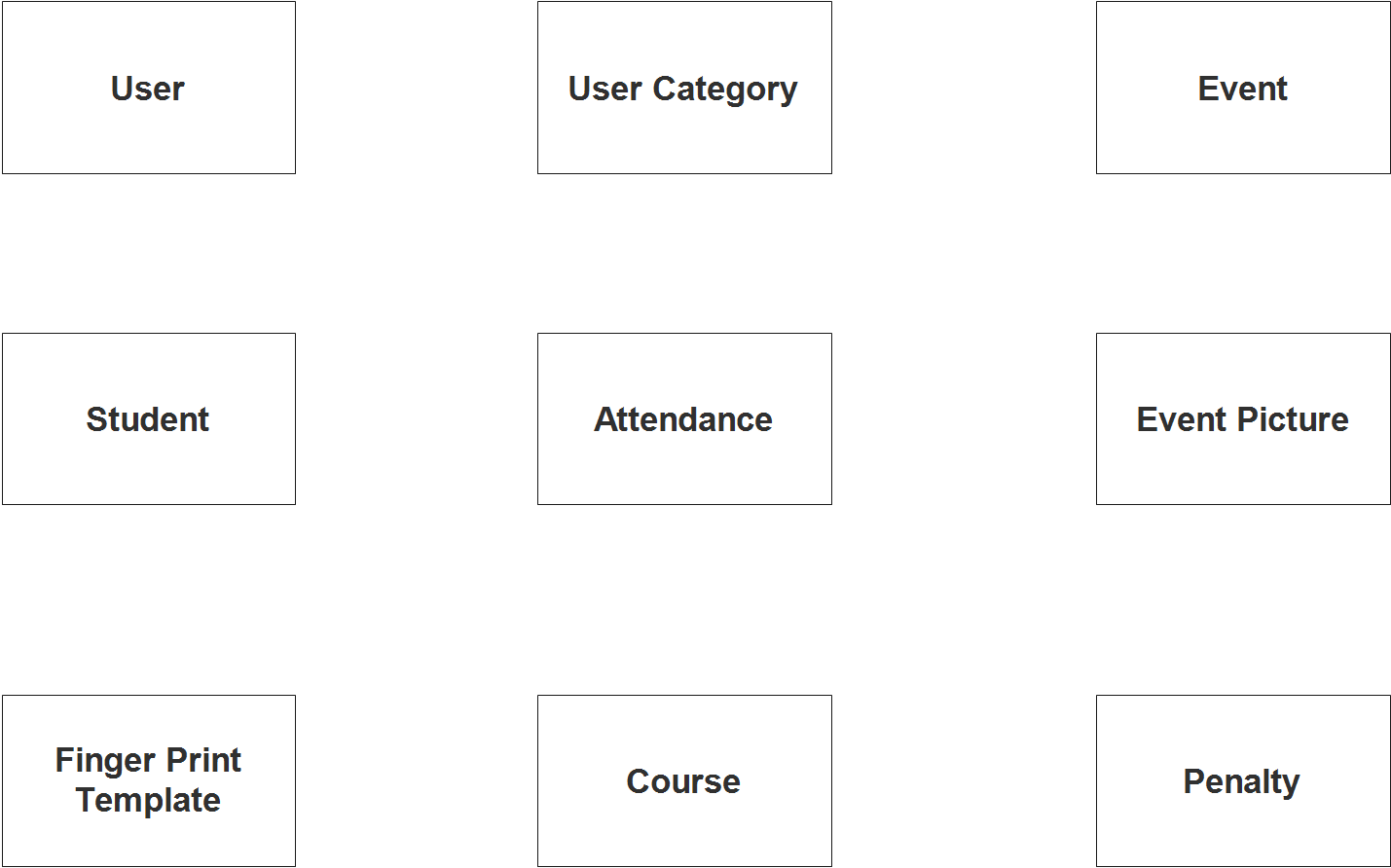
Step 2. After we have specified our entities, it is time now to connect or establish a relationship among the entities.
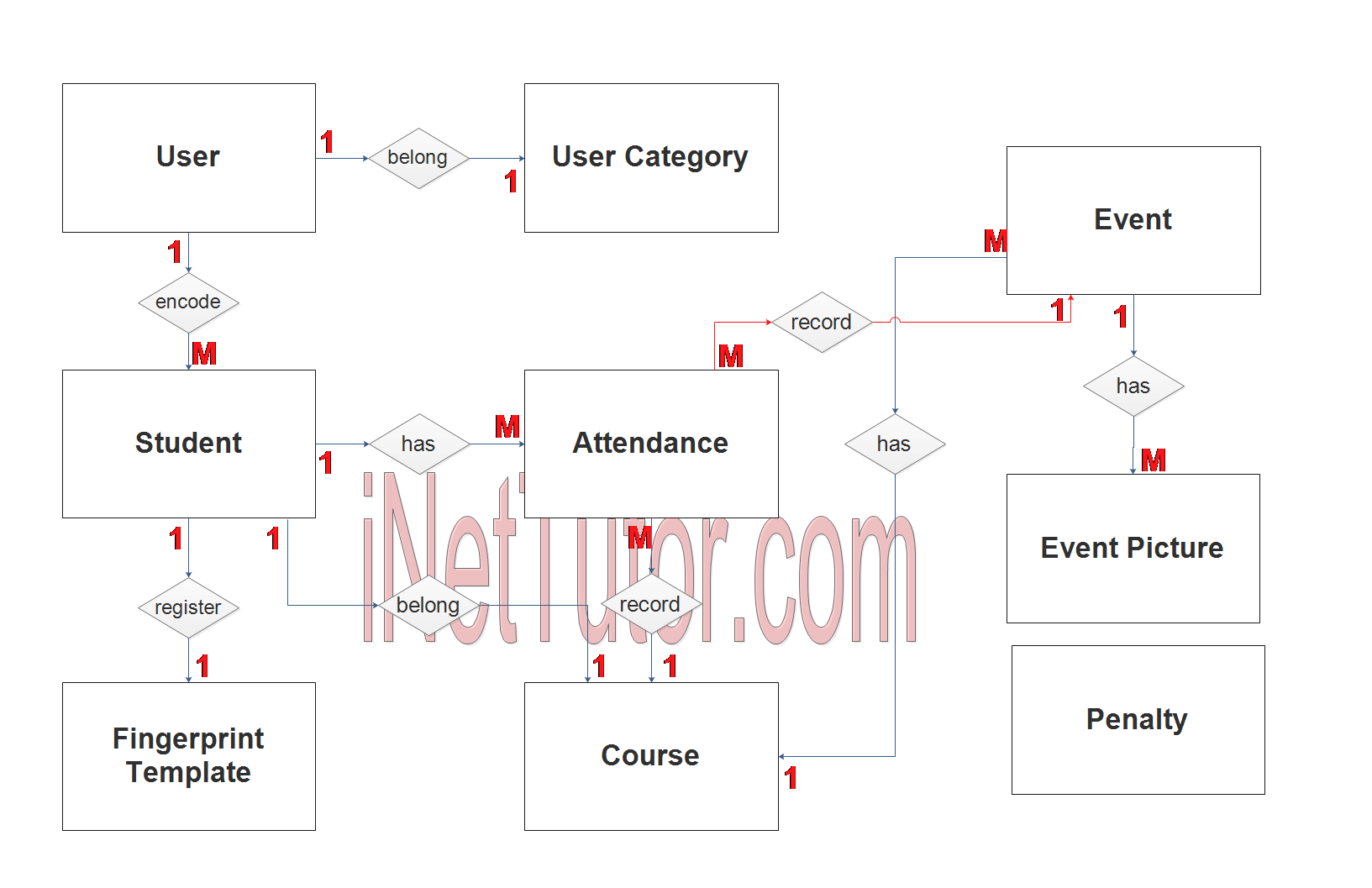
- The user belongs to a specific user group or category (1 to 1 relationship).
- The user encode/manage/update the student information (1 to many relationship).
- The student registers their fingerprint in the system (1 to 1 relationship).
- The student belongs to a program or course (1 to 1 relationship).
- The student attends an activity and their attendance is captured by the system (1 to many relationship).
- The course or program monitors/records the attendance of their students (1 to many relationship).
- The course or program conducts an event or activity (1 to many relationship).
- The event or activity contains banner or promotional images (1 to many relationship).
Step 3. The last part of the ERD process is to add attributes to our entities.
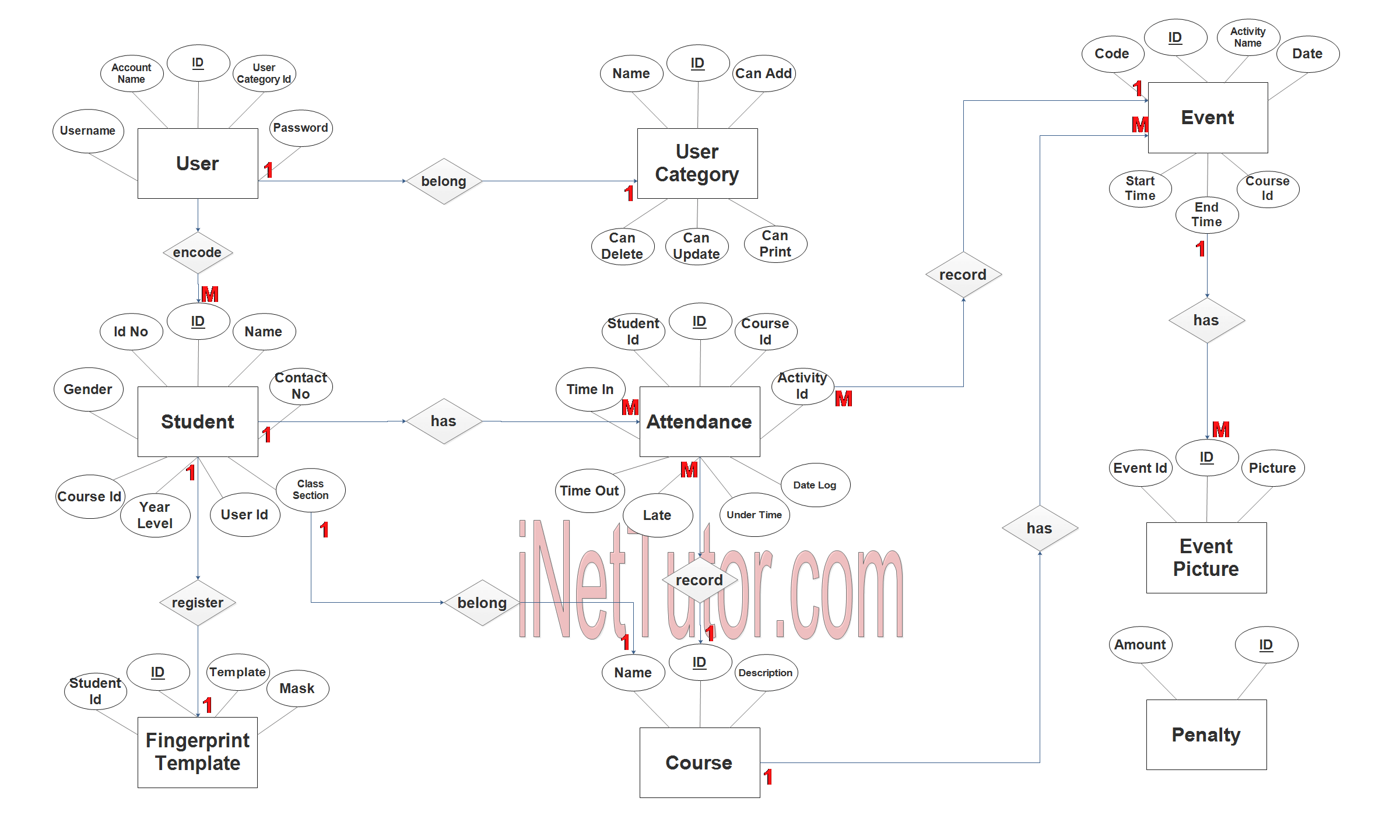
User Entity has the following attributes:
- ID – primary key represented with underline
- Account Name
- User Category ID – foreign key
- Username
- Password
User Category Entity has the following attributes:
- ID – primary key represented with underline
- Name
- Can Add
- Can Delete
- Can Update
- Can Print
Student Entity has the following attributes:
- ID – primary key represented with underline
- ID No
- Name
- Gender
- Contact NO
- Course ID – foreign key
- Year Level
- User ID – foreign key
- Class Section
Course Entity has the following attributes:
- ID – primary key represented with underline
- Name
- Description
Attendance Entity has the following attributes:
- ID – primary key represented with underline
- Student ID – foreign key
- Course ID – foreign key
- Time In
- Time Out
- Activity ID – foreign key
- Late
- Under Time
- Date Log
Fingerprint Template Entity has the following attributes:
- ID – primary key represented with underline
- Student ID – foreign key
- Template
- Mask
Event Entity has the following attributes:
- ID – primary key represented with underline
- Code
- Activity Name
- Date
- Start time
- End time
- Course ID – foreign key
Event Picture Entity has the following attributes:
- ID – primary key represented with underline
- Event ID – foreign key
- Picture
Penalty Entity has the following attributes:
- ID – primary key represented with underline
- Amount
Note: all attributes with underline represents the primary key of the entity or table.
The next step is to convert the plan designed on ER Diagram into the actual database, please search for the Biometric Based Attendance System article which was already posted.
Contact us on our facebook page for the softcopy of the Biometric Based Attendance System.
You may visit our facebook page for more information, inquiries and comments.
Hire our team to do the project.
